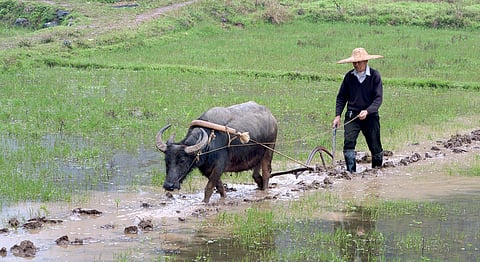

Across rural areas, families depend on forests and natural ecosystems not only for food and fuel but also for income, traditions, and identity. But managing these resources is becoming harder.
Land is being divided into smaller plots, young people are moving to cities, villages are left with aging populations, and the environment itself is under pressure.
At the same time, the traditional knowledge that once guided people on how to use forests wisely is slowly disappearing.
Two new studies published on August 26, 2025, in the journal Scientific Reports, show how the size of land, shared services, and traditional wisdom can help both communities and ecosystems survive.
The research was done in two very different places, rural China and semi-arid Iran. It shows that the way forward lies in connecting modern management with local wisdom.
The study in China was led by Longjunjiang Huang from Zhongnan University of Economics and Law, Lishan Li from Jiangxi Agricultural University, and Xin Luo from Beijing Forestry University.
They surveyed 505 rural households in ten counties of Jiangxi Province between 2017 and 2018. To understand how well people managed their forests, they measured inputs like land, money, and labour, and compared them with outputs such as income from forestry.
This efficiency was called Forestland Management Efficiency, or FME. They then studied how the size of forestland affected efficiency using advanced economic models and also looked at family and social factors.
The results showed that families with larger areas of forest managed them more efficiently. Unlike the common belief that bigger plots eventually reduce benefits, the study found that larger plots continued to bring better results.
The key reason was the presence of social forestry services, shared machinery, technical advice, and collective labour. These services helped households overcome labour shortages and high costs.
Interestingly, factors such as the age or education of family members mattered less than whether the family relied mainly on forestry and how well they were connected to these shared services.
The study in Iran was carried out in Bardsir County by Azam Khosravi Mashizi from the University of Jiroft, He and Francisco Escobedo studied ecosystem services such as water yield, soil stability, beekeeping, medicinal plants, and cultural activities.
For this, they used ecological field data, GIS mapping, and the InVEST modeling tool. They also interviewed 315 local people to understand their traditional ecological knowledge.
With the help of Structural Equation Modeling, they examined how traditional knowledge and habitat quality were linked to ecosystem services.
They found that places with healthier habitats and stronger traditional knowledge provided better services to people.
Habitat quality supported regulating services like soil and water stability, while traditional knowledge supported cultural services, beekeeping, and the use of medicinal plants.
The strongest impact came when healthy land and traditional knowledge were used together. In these cases, the land stayed strong, and people’s wisdom guided its use, so both nature and the community benefited.
Together, these two studies highlight that larger, consolidated land can be managed more productively, but only when supported by shared services that reduce costs and help families work together.
Traditional ecological knowledge adds richness to ecosystems, but only if the environment itself is protected. Modern science and local wisdom must come together, neither can succeed alone.